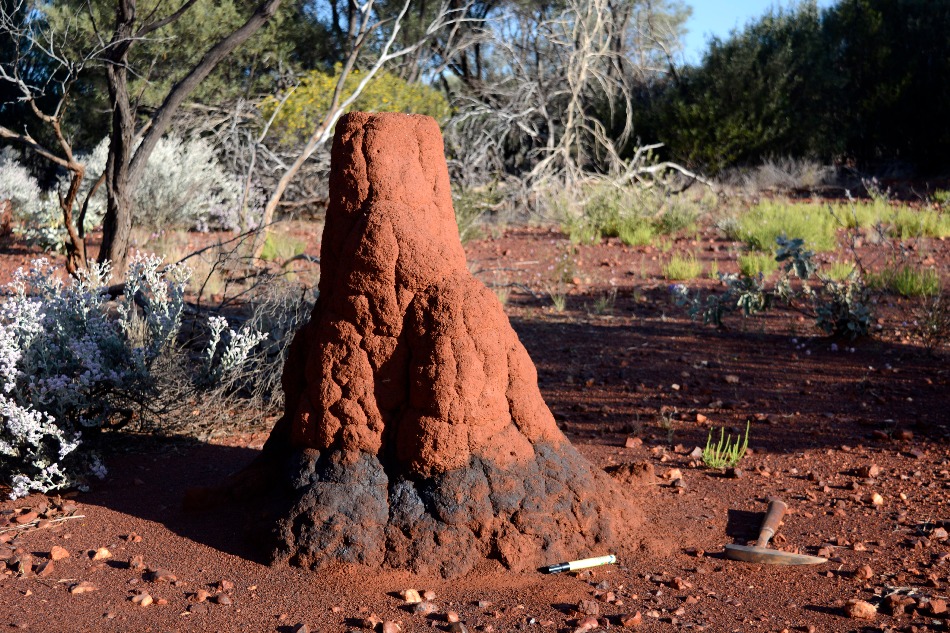Feb 26 2020
Hidden metal deposits needed to transition the world to low emission technologies can be discovered using metallic blue crusts in soils and on termite mounds as signposts, according to new research from Australia's national science agency, CSIRO.
 The blue metallic shine of manganese crust incorporated into this termite mound in the southern Pilbara region of WA contains zinc isotopes that can reveal the presence of hidden metal deposits nearby.
The blue metallic shine of manganese crust incorporated into this termite mound in the southern Pilbara region of WA contains zinc isotopes that can reveal the presence of hidden metal deposits nearby.
CSIRO's study in the southern Pilbara region of WA used new advances in sample analysis to show how metallic blue crusts, known as manganese crusts, display unique zinc signatures that indicate the presence of other base metals in the surrounding area.
The manganese crusts are also found in rock and cave varnishes, making them an easily accessible exploration tool for base metals including nickel and cobalt, which will support the world's transition to a low emissions future.
Dr Sam Spinks was lead scientist on the research and said CSIRO's innovative new exploration tools and processes are helping to tackle the global challenge of sustainable energy and resources.
"Australian explorers need new, cost-effective techniques to find the next generation of deposits below the surface," Dr Spinks said.
"As the world transitions to a low emission future, there's a need for more nickel and cobalt to build electric vehicles and batteries to store renewable energy.
"We've shown that analysing zinc isotopes found in manganese crusts have huge potential to be used to explore for these metal deposits, and others."
CSIRO analysed termite mounds and soils close to a zinc-lead-silver deposit, comparing this data to samples from elsewhere, to prove the connection.
"Zinc is commonly found in most base metal deposits, and over time, it's released and ends up in a range of natural materials such as soils, termite mounds and vegetation," Dr Spinks said.
"The zinc is altered as it moves from the metal deposit to the surface, which has traditionally made it unreliable as an exploration tool, but we've been able to apply recent advances in data analysis to understand it in more detail.
"This new research shows we can now measure zinc variations, or isotopes, so accurately that we can identify what metal deposit lies deep underground."
Termite mounds are already being used in Australian exploration, following earlier CSIRO research that found termites bring up small particles from an ore deposit and store them in their mound.
"Australian exploration companies have been analysing samples from termite mounds in gold exploration in recent years, now zinc offers another technique for use in broader environments and to find a range of metals," CSIRO research group leader, Dr Yulia Uvarova, said.
The research findings have been published in the journal Chemical Geology, and available for CSIRO's partners to use in exploration.